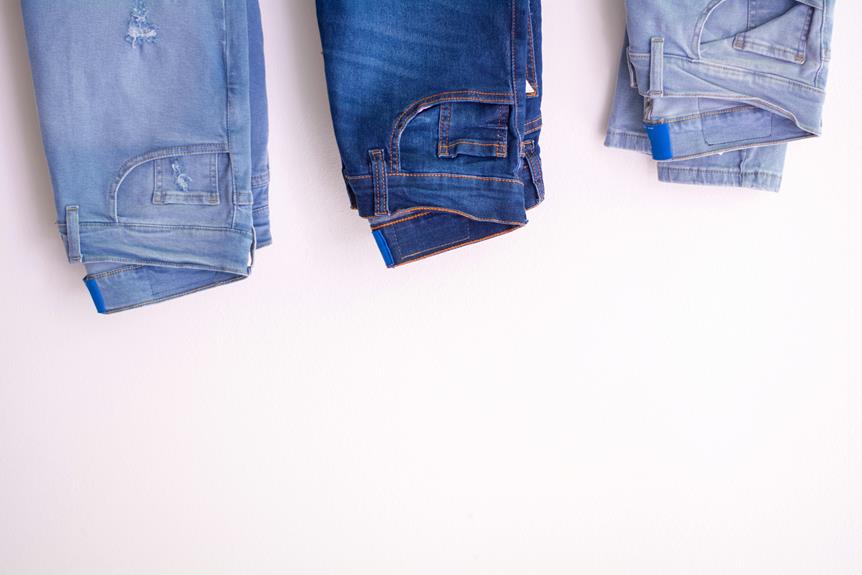When you consider microfleece fabric, you might wonder just how stretchy it really is. While it does have some level of stretch, the extent depends largely on the specific blend of fibers used. You'll find that the addition of materials like spandex enhances its flexibility, making it more comfortable and functional for various activities. However, not all microfleece is created equal—some offer more give than others. So, what factors influence this variability, and how does it stack up against other popular fabrics?
Table of Contents
What Is Microfleece Fabric?
Microfleece fabric is a soft, lightweight material made primarily from polyester that's known for its warmth and versatility. You'll often find it in clothing and home textiles like blankets and throws. Its cozy texture makes it a popular choice for outdoor enthusiasts and casual wear alike.
When you wear microfleece, you'll appreciate how it feels against your skin—smooth and comfy, perfect for layering in cooler weather.
One thing that stands out about microfleece is its ability to provide insulation without adding bulk. This means you can enjoy its warmth while staying mobile, whether you're hiking, camping, or simply lounging at home.
Plus, the fabric is quick-drying, so if you get caught in a light rain or spill something, you won't be left feeling soggy.
In terms of care, microfleece is machine washable and tends to keep its shape and color over time, making it low-maintenance.
When you choose microfleece for your wardrobe or home, you're opting for a practical fabric that combines comfort, durability, and easy upkeep, giving you the best of both worlds.
Properties of Microfleece
This lightweight fabric offers excellent insulation and breathability, making it ideal for both outdoor activities and cozy home wear. Microfleece's soft texture feels great against your skin, providing comfort whether you're lounging on the couch or hiking a trail. It's also moisture-wicking, which means it draws sweat away from your body, keeping you dry and comfortable during physical activities.
Another significant property of microfleece is its quick-drying capability. After washing or getting wet, it dries rapidly, enabling you to wear your favorite items without long waits. Additionally, microfleece is relatively durable, resisting wear and tear better than some other fabrics, so you get long-lasting use out of your garments.
Hypoallergenic properties make microfleece a great option for those with sensitive skin or allergies, as it minimizes irritation. Lastly, the fabric's lightweight nature makes it easy to pack and carry, whether you're heading out for a weekend getaway or a day trip. When you choose microfleece, you're opting for a versatile, functional fabric that supports an active lifestyle while ensuring you stay cozy and comfortable.
Stretchiness of Microfleece
When it comes to the stretchiness of microfleece, you'll want to consider factors like fabric composition and the results of various stretch tests.
These elements can significantly affect how flexible and comfortable microfleece feels in different usage scenarios.
Let's explore how these aspects come together to define the performance of this popular fabric.
Fabric Composition Factors
The blend of fibers used in microfleece plays a crucial role in determining its stretchiness and overall comfort. Typically, microfleece consists of polyester, but manufacturers often mix in other fibers like spandex to enhance flexibility.
The dominant polyester provides lightweight warmth, while the addition of stretchable fibers significantly improves the fabric's ability to move with you.
When considering microfleece for activities that require mobility, look for blends with a higher spandex content. This blend can make the fabric feel snug without being restrictive. If you're after something cozy for lounging at home, a standard polyester microfleece will likely suit your needs well.
Another factor influencing stretchiness is the fabric's construction. Microfleece is often brushed on both sides, resulting in a soft, pliable texture that enhances flexibility. The tighter the weave, the less stretch you may get, so pay attention to product specifications.
Stretch Test Results
To understand how stretchy microfleece really is, it's essential to look at specific stretch test results that highlight its performance across different blends and constructions. These tests measure how much the fabric can elongate without losing its original shape. You'll find that microfleece varies significantly based on its composition.
- Polyester Blends: Microfleece made primarily from polyester typically shows 10-20% elasticity, allowing for a comfortable fit that moves with your body without being overly restrictive.
- Microfiber Variants: When blended with microfibers, the stretchiness can increase to around 20-30%. This enhanced flexibility makes it a favorite for activewear, where movement is essential.
- Nylon Reinforcements: Microfleece mixed with nylon can exhibit upwards of 30-40% stretch. This makes it ideal for items that require a snug, form-fitting design while still providing warmth.
Usage Scenarios Explained
Microfleece's varying stretchiness makes it an excellent choice for numerous activities, from casual wear to high-energy sports. Whether you're lounging at home or hitting the trails, its different stretch levels can benefit your experience.
Here's a quick look at some common usage scenarios for microfleece, highlighting its flexibility:
| Activity | Benefits of Microfleece | Stretch Requirement |
|---|---|---|
| Casual Wear | Soft, warm, and comfortable | Low Stretch |
| Gym Workouts | Lightweight and moisture-wicking | Moderate Stretch |
| Hiking/Outdoor Sports | Insulating yet breathable | High Stretch |
| Layering in Cold Weather | Easy layering without bulk | Low to Moderate Stretch |
As you can see, microfleece adapts to various settings, providing warmth and comfort without sacrificing freedom of movement. For instance, when you're exercising, the moderate stretch allows you to move comfortably, while for casual outings, the low stretch offers a relaxed fit. No matter the activity, microfleece keeps you cozy and ready for anything!
Comparison With Other Fabrics
When comparing microfleece with fabrics like polyester and wool, you'll discover distinct differences in stretchability and comfort. Microfleece is known for its lightweight and soft texture, making it a popular choice for layering. However, when evaluating its stretchiness, you might find it less flexible than some alternatives.
- Polyester: Polyester is often more elastic than microfleece. It can offer a good balance of stretch and durability, making it a common choice for activewear. If you need something that moves with you, polyester might be a better option.
- Wool: Wool provides natural stretch due to its unique properties. It's generally warmer than microfleece and can wick moisture effectively. However, wool can feel bulkier and may not have the same soft touch as microfleece.
- Microfleece: While it isn't as stretchy as polyester or wool, microfleece excels in comfort and thermal insulation. It's perfect for cozy garments but may not be ideal for activities that require more movement.
Understanding these differences can help you make an informed choice based on your specific needs.
Best Uses for Microfleece
Ideal for cold weather layering, microfleece provides warmth and comfort while remaining lightweight and breathable. You'll find it's perfect for a variety of activities, from outdoor adventures to cozy nights in.
When you go hiking or camping, consider wearing a microfleece jacket. It'll keep you warm without bulk, allowing for easy movement.
If you're hitting the slopes, a microfleece base layer will help regulate your body temperature while wicking away moisture, ensuring you stay dry and comfortable.
You can also use microfleece for loungewear; its soft texture makes it ideal for snuggling up on the couch with a good book or a movie.
For those chilly mornings, don a microfleece beanie or scarf to keep the heat in. You can even find microfleece blankets that are excellent for picnics or as extra warmth on your bed.
However you choose to wear or use it, microfleece is versatile enough to fit into any cold-weather wardrobe.
With its lightweight nature, you'll appreciate how microfleece layers easily under heavier coats or jackets without feeling restrictive. Just think of all the ways it enhances your comfort during the colder months!
Care and Maintenance Tips
Caring for microfleece properly ensures it stays soft, warm, and retains its shape for your cold-weather adventures. Keeping your microfleece items in top condition requires a few simple practices. By following these care tips, you'll enjoy the comfort and functionality of your microfleece for years to come.
- Washing: Always wash microfleece in cold water on a gentle cycle. Avoid using bleach or fabric softeners, as they can damage the fibers and reduce the fabric's insulating properties.
- Drying: Air drying is the best option for microfleece, but if you're short on time, use a low heat setting in the dryer. Remove it promptly to prevent unnecessary wrinkling and maintain its plush feel.
- Storing: When storing your microfleece, make sure it's completely dry. Fold it neatly or hang it up to prevent creasing. Keep it in a cool, dry place to protect it from moisture or pests.
Frequently Asked Questions
Can Microfleece Fabric Be Used for Outdoor Activities?
Absolutely, you can use microfleece fabric for outdoor activities. It's lightweight, warm, and moisture-wicking, making it great for layering. Just make sure to combine it with other fabrics for optimal protection against the elements.
Is Microfleece Eco-Friendly Compared to Other Fabrics?
Microfleece can be more eco-friendly than some fabrics, as it's often made from recycled materials. However, its sustainability depends on the production process, so you should research brands to find the most environmentally responsible options.
How Does Microfleece Handle Moisture and Humidity?
Microfleece wicks moisture away from your skin, keeping you dry and comfortable. It's lightweight and breathable, making it great for humid conditions. You'll appreciate how it dries quickly, ensuring you stay warm during outdoor activities.
What Colors and Patterns Are Available for Microfleece?
You'll find microfleece available in a variety of vibrant colors and patterns, from classic solids to intricate prints. This variety allows you to express your style while enjoying the comfort and warmth it provides.
Can Microfleece Be Recycled or Repurposed?
Yes, you can recycle or repurpose microfleece. Some communities offer recycling programs for textiles, while you might transform old microfleece into blankets, pet beds, or bags, giving your fabric a new life and reducing waste.
- How Does Ring Spun Cotton Affect Garment Fit and Shape Retention? - August 13, 2024
- What Are the Challenges in Producing Ring Spun Cotton? - August 13, 2024
- Is Ring Spun Cotton Suitable for Plus-Size Clothing? - August 13, 2024







